Now in its twelfth year, Class 46 is dedicated to European trade mark law and practice. This weblog is written by a team of enthusiasts who want to spread the word and share their thoughts with others.
Click here subscribe for free.
Who we all are...
EUTM applications increase by 9%
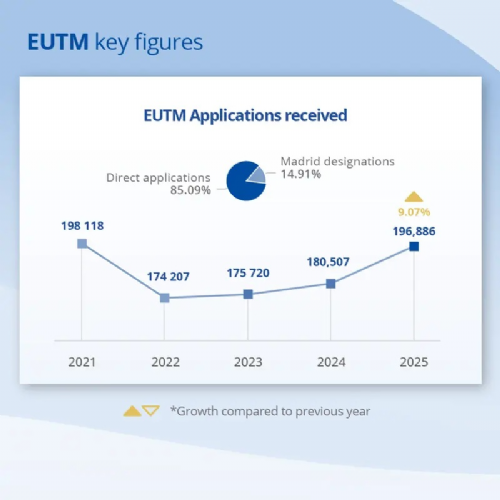 The EUIPO received 196,886 EUTM applications in 2025, an increase of 9.07% on 2024, according to figures published by the Office this week.
The EUIPO received 196,886 EUTM applications in 2025, an increase of 9.07% on 2024, according to figures published by the Office this week.
85.09% of the applications were direct applications, with Madrid designations making up 14.91%.
EU Member States accounted for 57.5% of applications. The top countries of origin of applications worldwide were:
| Country | Number |
|---|---|
| China | 31,265 |
| Germany | 24,988 |
| USA | 17,715 |
| Italy | 13,502 |
| Spain | 12,686 |
| France | 9,177 |
| UK | 8,411 |
| Poland | 7,826 |
| Netherlands | 7,179 |
Applications from China grew by 13.3%, while those from the EU increased by 9.4%. Among EU countries, there was significant growth in the Netherlands, Austria, Germany and Poland.
The top classes were:
| Class | Nnumber |
|---|---|
| 35 | 37,251 |
| 09 | 31,387 |
| 42 | 26,038 |
| 41 | 22,653 |
| 25 | 13,405 |
| 05 | 11,660 |
| 03 | 10,856 |
| 37 | 8,577 |
| 16 | 8,388 |
| 36 | 8,223 |
Read more on EUIPO’s website here, from where the above chart is taken.
Posted by: Blog Administrator @ 09.01Tags: EUTM, EUIPO, Madrid designations,


 Sharing on Social Media? Use the link below...
Sharing on Social Media? Use the link below...Perm-A-Link: https://www.marques.org/blogs/class46?XID=BHA5416
Vote for most iconic UK trade mark
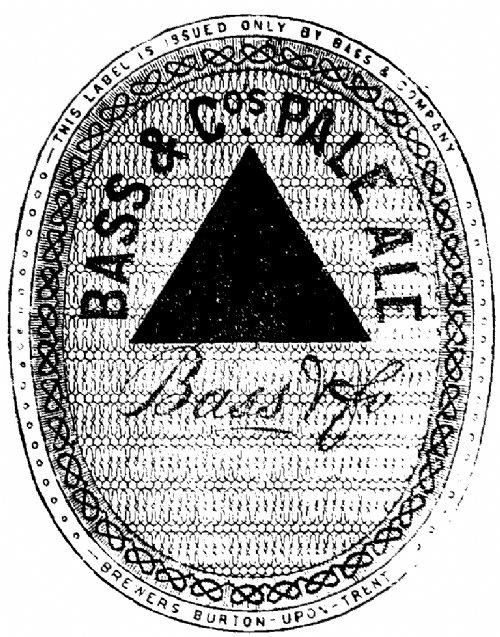 To mark the 150th anniversary of the UK trade mark registry on 1 January 2026, the UK IPO is asking users to vote for the most iconic registered mark.
To mark the 150th anniversary of the UK trade mark registry on 1 January 2026, the UK IPO is asking users to vote for the most iconic registered mark.
The first mark to be registered in the UK was filed by brewer Bass (UK00000000001, pictured) on 1 January 1876. Today, there are more than 2.5 million marks protected in the country.
You can vote for the most iconic trade mark on the UKIPO website here. Voting closes on 31 January 2026. The mark can be a registered logo, brand name, colour, sound or motion mark.
The UKIPO invites you to say what the chosen trade mark is special to you and what you think makes an iconic trade mark stand out from the rest.
Posted by: Blog Administrator @ 13.56Tags: UKIPO, Bass, iconic trade mark,


 Sharing on Social Media? Use the link below...
Sharing on Social Media? Use the link below...Perm-A-Link: https://www.marques.org/blogs/class46?XID=BHA5415
Grenada joins Madrid System
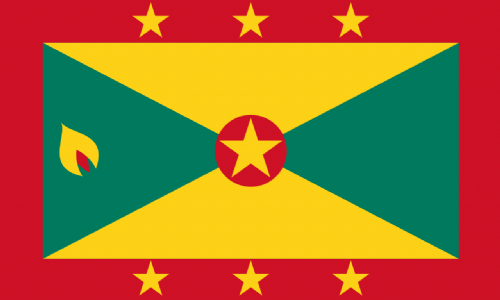 WIPO has confirmed that the government of Grenada deposited its instrument of accession to the Madrid Protocol on 15 December 2025.
WIPO has confirmed that the government of Grenada deposited its instrument of accession to the Madrid Protocol on 15 December 2025.
The Madrid Protocol will enter into force in Grenada on 15 March 2026.
The country becomes the 116th member of the Madrid System and the 10th in Latin America and the Caribbean. The international trade mark system now covers 132 countries in total.
WIPO will announce further information about specific declarations regarding time limits and applicable fees soon.
Grenada is an island country in the Windward Islands, known as the “Island of Spice”. According to Wikipedia, it had an estimated population of 114,621 in 2024 and a per capita GDP (PPP) of $20,195 in 2023.
Its main industries include tourism and agriculture (particularly the production and export of nutmeg, rum and chocolate). Popular sports include athletics, cricket and football.
Read more on WIPO's website here.
Posted by: Blog Administrator @ 09.06Tags: Madrid System, WIPO, Grenada,


 Sharing on Social Media? Use the link below...
Sharing on Social Media? Use the link below...Perm-A-Link: https://www.marques.org/blogs/class46?XID=BHA5414
Seasonís Greetings
 MARQUES wishes all our members, their colleagues and families, as well as all readers of the Class 46 blog, a Merry Christmas and Happy New Year!
MARQUES wishes all our members, their colleagues and families, as well as all readers of the Class 46 blog, a Merry Christmas and Happy New Year!
During the festive period, you can continue to engage with MARQUES on social media and view the resources on the website.
Please note however that the MARQUES Secretariat will close after business hours on 23rd December and reopen on Monday 5th January.
Any communications received during the festive period will be actioned after 5th January.
MARQUES has big plans for 2026, including the 40th Annual Conference, in Lisbon in September, and the first Design Symposium, in Frankfurt in January. View the events page to find out more.
We look forward to seeing members at these and other events during the year.
Picture created by MARQUES
Posted by: Blog Administrator @ 11.45Tags: Christmas, New Year, Lisbon, ,


 Sharing on Social Media? Use the link below...
Sharing on Social Media? Use the link below...Perm-A-Link: https://www.marques.org/blogs/class46?XID=BHA5413
Copyright, AI and the EUís next steps
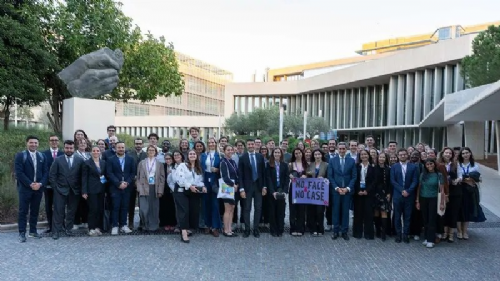 Pigi Konstantinou of the MARQUES Copyright Team shares some takeaways from EUIPO’s first copyright conference.
Pigi Konstantinou of the MARQUES Copyright Team shares some takeaways from EUIPO’s first copyright conference.
The EUIPO held its first-ever copyright conference at its headquarters in Alicante on 20–21 November 2025, marking a clear strategic shift of the Office toward deeper engagement with copyright matters.
The event celebrated the launch of the new EUIPO Copyright Knowledge Center, which provided the framework for two days of rich discussions, insightful presentations and various cultural activities.
The audience reflected the diversity of the copyright ecosystem: policy makers, major tech companies, academics, performers’ and authors’ representatives, as well as copyright experts and IP practitioners.
In parallel with the main sessions, the EUIPO hosted live concerts, dance performances, local creators showcasing handmade works, the unveiling of a mural, DJ sets, and a renowned visual artist drawing live throughout the conference.
Key takeaways from the presentations
A central theme was the EUIPO’s expanding role in the copyright field. The Office presented its ongoing initiatives, such as the Out-of-Commerce Works Portal, the Orphan Works Database, and AGORATEKA, and explained the mission of the Knowledge Center: to provide an authoritative hub for copyright-related news, case law, studies, and training materials and to support policy dialogue.
A forthcoming Copyright View service aims to enhance access to information on copyright status, authorship and rights ownership across Europe.
CJEU perspective
Maciej Szpunar, First Advocate General at the CJEU, stressed the crucial role of the Court in interpreting core legal notions amid fast-moving technological developments. He identified key structural challenges the internet and digital technologies pose to copyright law:
- Erosion of territoriality
- Transformation of storage, transmission and access to information
- Uncertainty surrounding exhaustion in the digital environment
- Reconfiguration of liability rules, with secondary liability becoming more central than primary infringement
- Increasing tension among fundamental rights and the need to balance them
He also referred to two of his recent opinions: HP Netherlands (C-496/24) on the private copy exception and Meta Platforms Ireland (Case C-797/23) on the press publishers’ right.
Ensuring cultural diversity in the age of AI
Professor Martin Senftleben focused on safeguarding both fair remuneration for authors and the cultural diversity of AI systems, an urgent priority, in his view. His proposals favoured regulating AI outputs rather than restricting inputs and emphasised collective licensing schemes as a more viable solution than individual licensing.
He outlined a model in which AI systems freely mine works, combined with levies at market entry and collective management of remuneration, with an opt-out pathway for rights holders seeking individual licensing.
Regulatory horizons: towards a General Copyright Regulation?
MEP Axel Voss underscored the persistent need for updated legislation. He floated the possibility of a General Copyright Regulation, analogous to the GDPR, to overcome fragmentation arising from national divergences.
Article 4 of the DSM Directive, he clarified, was never designed to address generative AI. In his view, the solution lies in licensing mechanisms and transparency obligations grounded in international law.
Mr Voss also advocated for the creation of an EUIPO-managed opt-out register, providing standardised, machine-readable notices for AI developers and potentially operating as a one-stop-shop licensing interface.
Creators’ concerns
Artists’ and authors’ representatives repeatedly stressed the importance of awareness, noting unequal national protection standards and the rapid evolution of AI tools. While many expressed concerns, some acknowledged new creative opportunities offered by AI.
Interestingly, the much-debated idea of an EUIPO copyright registration system remained largely peripheral. Nonetheless, collecting societies such as GEMA voiced significant reservations regarding its feasibility and effect on existing rights management structures.
Conclusion
The conference marked an important first step in the EUIPO’s growing involvement in copyright policy. How this initiative will unfold, especially in the complex landscape of generative AI, remains to be seen.
What is clear is that the conversation has begun, and the Office now stands at the threshold of shaping a more coherent and future-proof European copyright framework.
Pigi Konstantinou is a partner at Souriadakis Tsibris, Greece and a member of the MARQUES Copyright Team
Read more about the Copyright Conference, and view recordings of the sessions, on EUIPO’s website here, from where the picture above is taken
Posted by: Blog Administrator @ 09.01Tags: EUIPO, copyright, AI,


 Sharing on Social Media? Use the link below...
Sharing on Social Media? Use the link below...Perm-A-Link: https://www.marques.org/blogs/class46?XID=BHA5412
Thirteenth edition of Nice Classification
 WIPO has announced that the 13th edition of the Nice Classification will take effect on 1 January 2026.
WIPO has announced that the 13th edition of the Nice Classification will take effect on 1 January 2026.
New editions of the Nice Classification are published every three years, with annual updates to each edition.
In the new edition, certain goods and services have been reclassified. You can review the changes on WIPO’s website here.
The new edition will apply to all new applications received by offices of origin from 1 January 2026 and any application that WIPO receives from 1 January 2026 after the two-month time limit referred to in Article 3(4) of the Madrid Protocol.
Existing trade mark applications do not need to be reclassified.
The goods and services manager in eMadrid will be updated on 1 January 2026.
For more information, read the announcement on WIPO’s website here.
Posted by: Blog Administrator @ 08.52Tags: Nice, Madrid, WIPO,


 Sharing on Social Media? Use the link below...
Sharing on Social Media? Use the link below...Perm-A-Link: https://www.marques.org/blogs/class46?XID=BHA5411
EU activates protection on CIGI products
As of 1 December 2025, Regulation (EU) 2023/2411 on the protection of Craft and Industrial Geographical Indications (CIGIs) applies. That means that registration for said names can be filed and benefit, under certain conditions, from EU-wide protection. María Ceballos of the MARQUES GI Team reports.
Introducing CIGIs
As discussed in the Talking MARQUES podcast and at one of the workshops during last Annual Conference in The Hague, until now protection in the EU for craft and industrial products had not been harmonised: only some EU countries granted it, under different figures, scopes and administration.
The existing GI system has so far been applicable only to agricultural GIs (AgriGIs), which up to date protects more than 3,600 names of wines, food and spirit drinks. The CIGI system is similar in many aspects to that of AgriGIs.
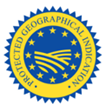 Protection of a CIGI is granted by registration, under the figure of Protected Geographical Indication (PGI) (note that some food and wines GIs are protected as Protected Designations of Origin (PDOs), and spirit drinks strictly as Geographical Indications (GIs), but all enjoy the same scope of protection). Once a product name has been registered as a GI, producers may use the corresponding EU symbol, which in case of a “PGI” is shown on the right.
Protection of a CIGI is granted by registration, under the figure of Protected Geographical Indication (PGI) (note that some food and wines GIs are protected as Protected Designations of Origin (PDOs), and spirit drinks strictly as Geographical Indications (GIs), but all enjoy the same scope of protection). Once a product name has been registered as a GI, producers may use the corresponding EU symbol, which in case of a “PGI” is shown on the right.
The EU GI Register, the official record of all protected GIs, is accessible through the public database GIview.
Registration requirements
With the new system, protection as a GI is granted not only to ‘craft products’, which are those produced either entirely by hand or with the aid of manual or digital tools or by mechanical means whenever the manual contribution is an important component of the finished product; but also to ‘industrial products’, namely those produced in a standardised way, including serial production and the use of machines.
To succeed in the registration of a CIGI, three cumulative requirements must be met:
- The product should be rooted in or originate in a specific place, region or country;
- At least one of the production stages (such as storage, processing, packaging) should take place in the defined geographical area; and
- At least one quality or characteristic of the product shall be attributable to the area.
Producers may apply through a producer group or a single producer under certain conditions. Each application must include, among other documents, a “product specification” outlining the name, production process and geographical area.
Applicants in most EU Member States shall follow a two-step registration process (Standard procedure), starting at national level, when the authority may charge fees, review the application and run a national opposition procedure; and continuing at EU level: the application is then assessed by the EUIPO, whose GI Division handles the EU-wide opposition procedure and decides on protection and registration.
Exceptionally, and because (among other reasons) they have no system at national level in place to manage CIGIs, the EU Commission has allowed applicants from Denmark, Finland, Lithuania, Luxembourg, Malta, the Netherlands and Sweden to follow a one-step process (Direct procedure) and apply directly to the EUIPO.
Applications for products originating in non-EU countries must be filed before the EUIPO either by the applicants or through the competent authorities of their countries.
Those names which were already protected in a Member State, under national norms, can follow a fast-track registration process before EUIPO, with no opposition procedure. This new EU system will replace the previously existing national norms for craft and industrial products, if there are any.
Detailed information about the filing process is available on the GI Hub on the EUIPO website and the GIportal information page.
Scope of protection
CIGIs will enjoy the same scope of protection as AgriGIs and be protected against any direct or indirect commercial use of a registered name, but also against any imitation, evocation, any other false or misleading indication and any other practice liable to mislead the consumer as to the true origin of the product. This applies even when the true origin of the product is indicated or when expressions such as “type”, “style” or similar are used. CIGIs will also be protected against use in e-commerce and the registration of domain names that reproduce or evoke the GI.
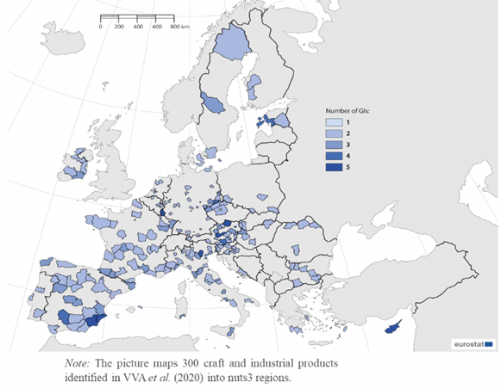 As evidenced with the Agri-GIs in the past 30 years, this enhanced protection framework contributes decisively to preserving the reputation of products that, in many cases, have been linked to a particular territory for centuries and brings many social and cultural benefits. PGIs boost cultural and heritage tourism in their region of origin, safeguard traditional skills, support local employment and help consumers recognise genuine, high-quality European products.
As evidenced with the Agri-GIs in the past 30 years, this enhanced protection framework contributes decisively to preserving the reputation of products that, in many cases, have been linked to a particular territory for centuries and brings many social and cultural benefits. PGIs boost cultural and heritage tourism in their region of origin, safeguard traditional skills, support local employment and help consumers recognise genuine, high-quality European products.
CIGIs will be particularly useful as hundreds of products have been identified as potentially eligible for GI protection in the EU, including a wide range of goods, such as glassblowing, pottery, cutlery, jewellery, shoes, textiles, porcelain and musical instruments. A map (2020, shown above right) shows up to 300 craft and industrial products in different EU regions.
This new protection completes the EU market for GIs and will offer a unique economic opportunity for craft and industrial producers to improve access to high value market. Cheers to that!
María Ceballos is a partner of Curell Suñol and a member of the MARQUES GI Team
Posted by: Blog Administrator @ 11.59Tags: CIGI, EU, GI Team,


 Sharing on Social Media? Use the link below...
Sharing on Social Media? Use the link below...Perm-A-Link: https://www.marques.org/blogs/class46?XID=BHA5410

